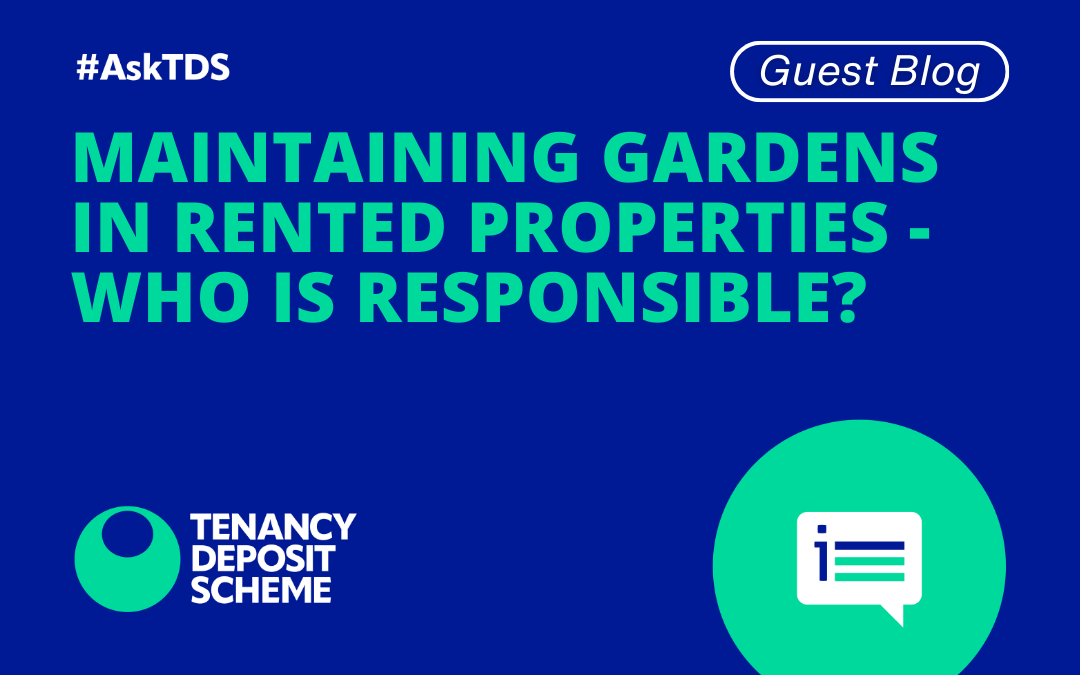The Tenancy Deposit Scheme (TDS) was asked who is responsible for garden maintenance in rental properties…
Gardening is one of the top 5 reasons for deposit disputes claimed by landlords using the TDS Custodial and TDS Insured tenancy deposit schemes. As the fifth most popular reason for deposit disputes, it makes sense that all parties do what they can to avoid disagreement. From a tenant’s perspective, a garden can be an appealing feature of a rental property. But whose responsibility is it to maintain the outside space? The tenant’s or the landlord’s?
Garden maintenance, a landlord or tenant responsibility?
Much of the basic garden maintenance will likely fall with the tenant unless the property comes with a gardener (the specifics of that will come down to what is agreed in the tenancy agreement). With that in mind, here are a few ways you can ensure the outside space of your rented properties do not end up digging away at the tenant’s deposit when they come to leave:
- Take note and photos of the condition of the garden before the tenant moves in. This should be a standard part of the check-in and inventory process carried out by all letting agents. It is up to the tenant to agree to the current condition at the start of the tenancy and it is their responsibility to return the garden (and all aspects of the property) in the same condition at end of tenancy, considering wear and tear. We at the TDS see many deposit disputes arise because the tenant and landlord disagree on the initial state of the garden and therefore can’t agree on what has changed during the tenancy.
- A standard tenancy agreement will require the tenant to trim the grass and bushes and remove rubbish and regularly empty bins. It is the responsibility of the landlord to make any repairs to the external areas of the property such as fencing, walls, paths, roofing, etc. unless specific damage has been caused to these areas as a result of the tenants. In that case, if the tenancy agreement allows, deposit deductions could be made to remedy the situation. It is also the landlord’s responsibility to carry out more complicated tasks such as tree pruning, unless the relevant equipment has been supplied and it is included in the tenancy agreement. If the landlord requires the tenant to mow the lawn and keep weeds at bay, they should provide the necessary equipment to enable them to do that, too.
- Check if the tenant is a keen gardener or plans to make good use of the outside space, as you will need to clarify what they can and can’t do in the garden. Make sure any agreements are put in writing. Make it clear to the tenant that if they want to make improvements to the garden, such as adding planters, vegetable patches, trees, or pathways, they will need to ask for permission first. Any permanent change must be explicitly agreed upon first, in writing, even if the tenant insists that it will improve the space.
- Tenants should be advised that it is best to beautify the garden space with temporary or semi-permanent improvements, such as pots and garden furniture, that can be removed at the end of the tenancy if required. The most important point to remember is that the garden must be returned to its original state unless otherwise agreed.
There are of course cases where the line of responsibility can be blurred. You can read through the TDS studies to see why dispute claims were made and how they were resolved, or take a look at our Garden Maintenance guide here. This will help you to ask the right questions at the start of the tenancy, and also help you prepare for the end of tenancy and deposit return.
The Tenancy Deposit Scheme (TDS) is one of The Letting Partnership’s trusted partners. For more details of who we work with see our Working in Partnership page
* * *
Would you like to receive our monthly Newsletter?
Sign up for our monthly Newsletter for helpful articles and regular industry updates. We promise not to spam you with hundreds of emails and you can unsubscribe at any time.


